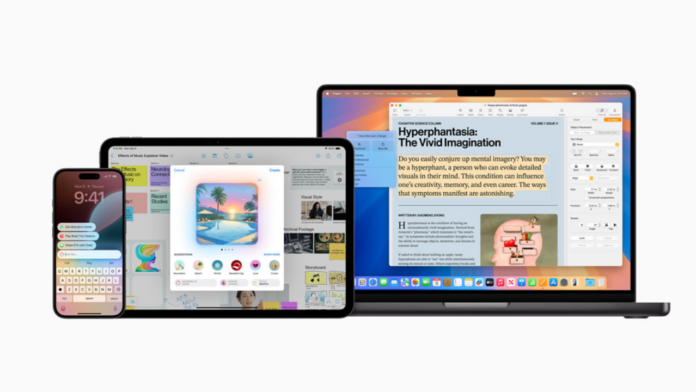Apple unveiled its new iPhone 16 series, marking a significant leap in artificial intelligence (AI) capabilities by integrating advanced features powered by its Proprietary Apple Intelligence. The latest models include a new camera control button that activates AI-powered features, offering what Apple calls “Visual Intelligence,” an approach to enhancing user interaction through machine learning.
AI Integration: A Strategic Shift
With the release of the iPhone 16 and 16 Pro models, Apple aims to combine hardware, software, and services to deliver AI functionalities directly on the device. This approach involves using the camera to understand and respond to user queries and provide suggestions based on the user’s environment. For example, the iPhone 16 Pro can analyze a scene using its camera and suggest improving the framing, indicating a shift towards context-aware AI.
Apple’s strategy includes a blend of on-device AI processing and private computing. The company emphasizes that user data is processed locally on the device or dedicated servers, ensuring privacy by keeping data from being stored or shared in the cloud. This focus on privacy is a distinctive approach compared to other AI offerings in the market.
Enhanced Hardware for AI Capabilities
The iPhone 16 series features the latest A18 and A18 Pro processors to support the new AI functionalities designed to handle high-performance computing tasks. According to Apple, these chips are faster than previous models and even challenge the performance of some high-end desktop PCs. The A18 Pro chip, exclusive to the iPhone 16 Pro, is optimized for generative AI workloads, offering improved performance with greater memory bandwidth, enabling more complex AI-driven tasks.
Apple has also introduced a new “Private Cloud Compute” concept, which allows certain AI models to run on dedicated servers while ensuring that data remains under user control. This combination of on-device and cloud-based AI processing aims to provide a seamless experience without compromising privacy.
Related Stories:
Apple Unveils Hearing Health, Sleep Apnea Features: What is the X Factor?
Apple Watch Series 10, AirPods 4, AirPods 4 ANC, and More Announced
Revamping Siri with AI
Apple is also revitalizing its voice assistant, Siri, with enhanced capabilities powered by Apple Intelligence. The company focuses on creating a more personalized user experience by integrating AI-driven features into first-party and third-party apps. Apple’s emphasis on user control over data sharing with third-party apps is expected to attract privacy-conscious users and drive growth.
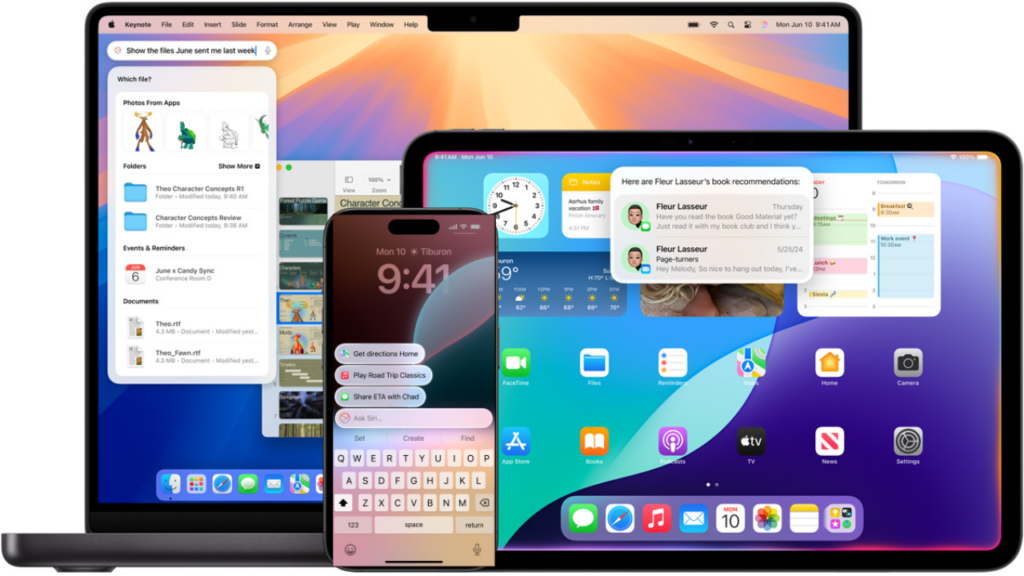
New AI-Powered Features on iPhone 16 Series at a Glance
Writing Tools: AI-powered writing tools will be integrated into multiple Apple apps, such as Mail, Messages, and Notes. These tools enable users to summarize, generate, and refine text. Additionally, users can lengthen a message or email, or rewrite it in different styles using specific prompts.
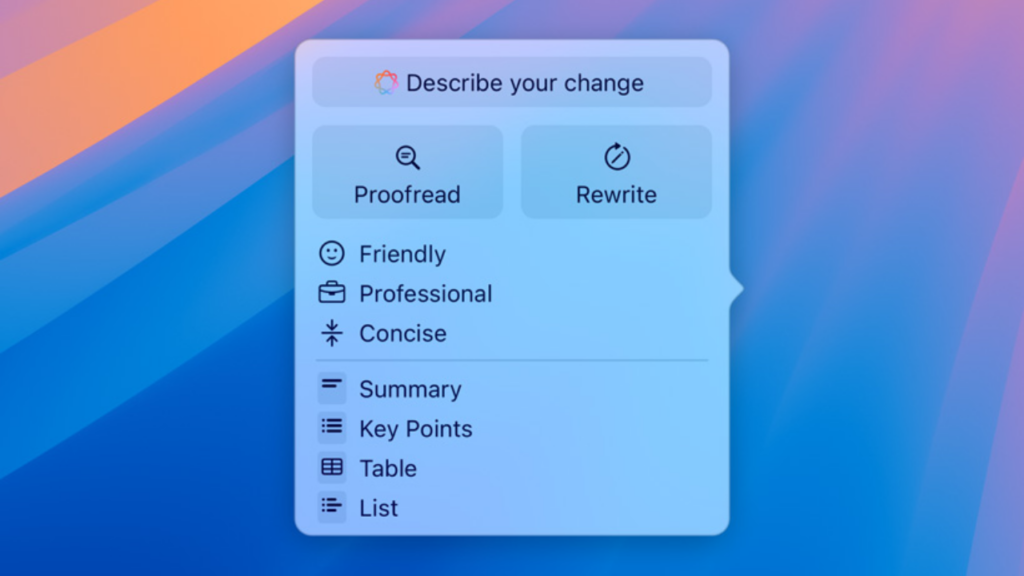
Notification Summarisation: The iOS 18 update will introduce a notification summarization feature designed to reduce notification clutter. The AI will prioritize important notifications by placing them at the top of the stack and summarizing them for quick viewing. The system will also filter out notifications that do not require immediate attention.
Clean Up in Images: The new “Clean Up” feature offers object removal capabilities. It allows users to eliminate unwanted elements from photos, such as people or objects obstructing a view. The AI can perform automatic removals or let users manually highlight objects to be removed.
AI Search in Photos: Users can search their Photos app using natural language queries, asking for specific images with descriptive prompts.
Email Summary: The AI will provide a feature to summarize lengthy email threads, highlighting the most critical points for users.
Image Playground: This tool will allow users to create custom emojis or generate images using Apple Intelligence.
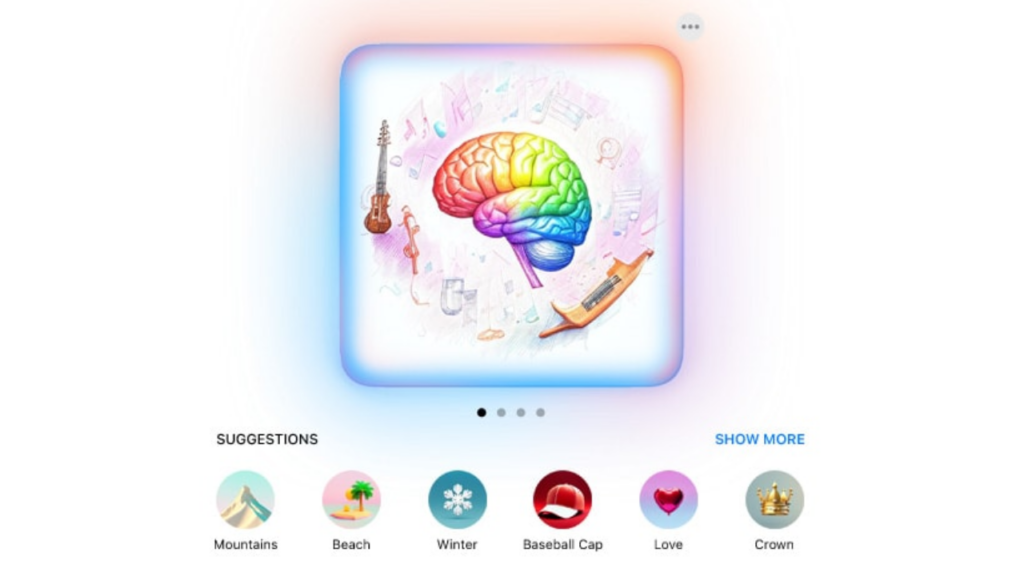
Private Cloud Compute: Apple is introducing a “Private Cloud Compute” (PCC) system that enables stateless data processing. In this system, the user’s device sends data to Apple’s servers to fulfill AI requests. Apple assures that user data will only remain on the server temporarily, with no data retention after the request is completed.
The initial rollout will be in U.S. English, with additional localized English variants coming in December. Support for other languages, including Chinese, Spanish, French, and Japanese, is planned for next year.
Future AI Features to Watch
Apple also announced several AI features to be released in future updates. These include integration with ChatGPT, enhancements to Siri, and the new Genmoji tool.
ChatGPT Integration: Apple plans to integrate ChatGPT, the AI chatbot developed by OpenAI, within Siri and the system-wide Writing Tools. This integration will enhance Siri’s ability to handle web-based queries and provide in-depth responses. Users will have control over when Siri accesses ChatGPT, ensuring privacy and contextual use.
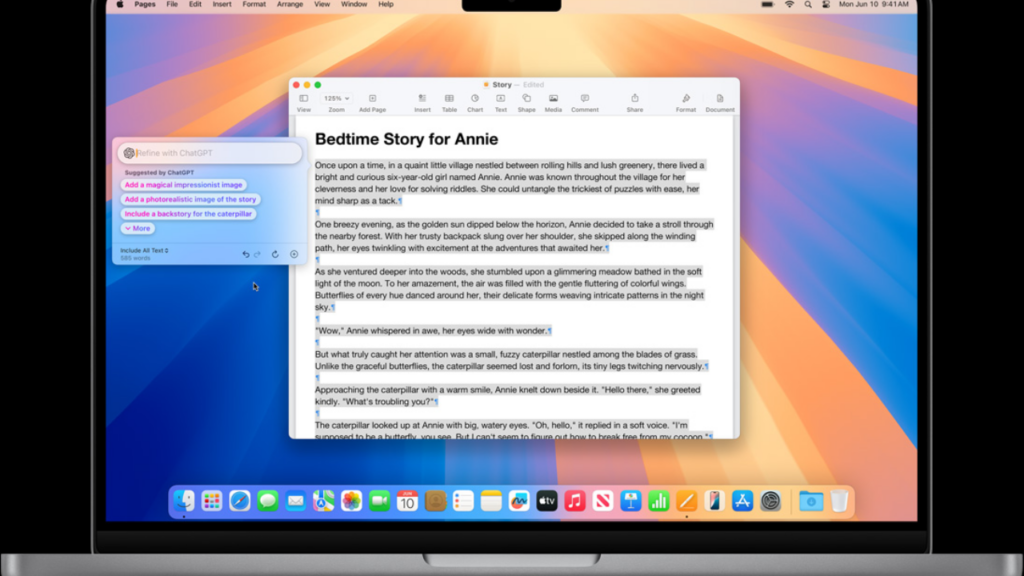
Smarter Siri: Siri will receive a significant upgrade, incorporating AI-powered conversational capabilities for more natural interaction with users. It will also be able to handle complex tasks across various apps.
Genmoji: The “Genmoji” tool will allow users to turn rough sketches into related images. Users can also upload photos and transform them into artistic interpretations.
Visual Intelligence: A new “Visual Intelligence” feature allows users to tap the Camera Control button to activate AI and gather more information about images. It offers capabilities similar to Google Lens, such as booking reservations or tickets and solving mathematical problems by analyzing images.
Market Impact and Future Prospects
While Apple has been relatively quiet about AI in its marketing until now, the company’s new AI-focused approach in the iPhone 16 series could mark a turning point in the AI landscape for consumer technology. By embedding generative AI capabilities directly into its hardware and software ecosystem, Apple aims to capture the attention of users looking for privacy-centric AI solutions.
As Apple steps up its AI game, Apple’s success of the iPhone 16 series will likely depend on how consumers embrace these new capabilities and how they compare with the competition’s data-driven models.


